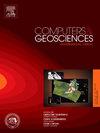Synthetic seismic data generation with pix2pix for enhanced fault detection model training
IF 4.2
2区 地球科学
Q1 COMPUTER SCIENCE, INTERDISCIPLINARY APPLICATIONS
引用次数: 0
Abstract
Manual fault interpretation from seismic data is time-consuming and subjective, often yielding inconsistent results. While attribute-based methods improve efficiency, they have limitations. Deep learning has emerged as a promising approach to address these challenges, but acquiring sufficient labeled data is difficult and costly. Synthetic data offers a solution, enabling easier labeling, scalability, and freedom from biases. It can be used alongside field data for pre-training or exclusively for model training. Optimizing synthetic data generation is crucial for effective fault interpretation. Previous studies have explored optimization using style transfer or generative models, which still involve numerical modeling and post-processing steps. In this study, we employ the pix2pix model to generate seismic sections for fault detection, integrating it with sketch-based modeling. Pix2pix is an image-to-image translation model within a conditional generative adversarial networks framework, tailored to the user needs by using images as conditional variables. We experiment with our proposed method using field data examples from the Netherlands Offshore F3 Block and the Thebe Gas Field. Our approach successfully replicates texture-related attributes, including noise, frequency, and amplitude, to resemble field data, thereby facilitating fault interpretation. We provide insights from variations in seismic data and fault interpretation results based on four sketch generation methods and loss function weights of pix2pix. Our approach offers notable advantages, reducing the need for extensive modeling and data processing, thereby streamlining field data analysis in generating optimal seismic sections for fault detection. It is particularly effective when the structural characteristics of reflectivity sketches closely match those of field data. Future research will focus on enhancing geological model production to capture structural characteristics of field data more effectively.
求助全文
约1分钟内获得全文
求助全文
来源期刊

Computers & Geosciences
地学-地球科学综合
CiteScore
9.30
自引率
6.80%
发文量
164
审稿时长
3.4 months
期刊介绍:
Computers & Geosciences publishes high impact, original research at the interface between Computer Sciences and Geosciences. Publications should apply modern computer science paradigms, whether computational or informatics-based, to address problems in the geosciences.
 求助内容:
求助内容: 应助结果提醒方式:
应助结果提醒方式:


